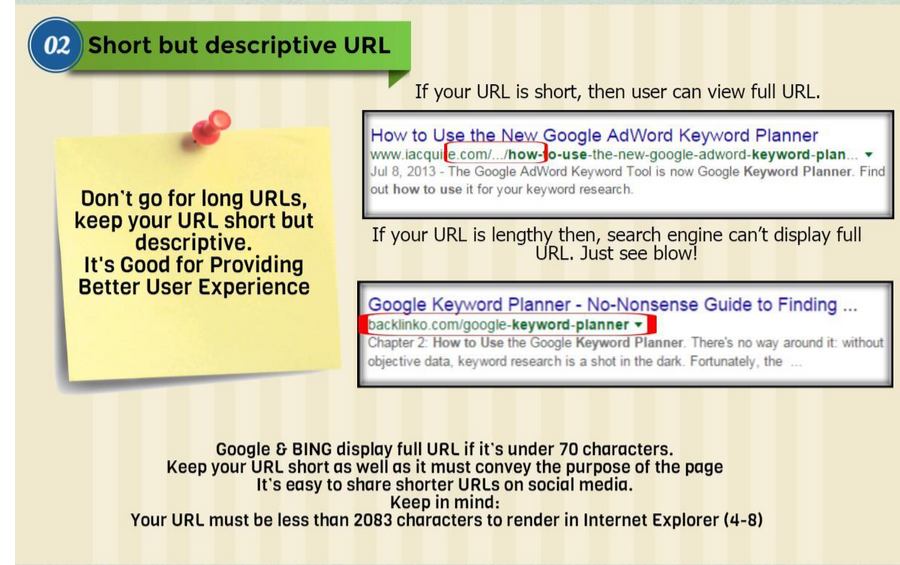SEO Writing: Make Your Blogs Rank on Google With These 13 Tips

What’s the most consuming thought of a content writer who writes for websites or blogs? Many might say choosing the topic, and some might say structuring the content. But let’s break that bubble! The things mentioned above are quite time-consuming, but the most daunting task for any writer is to write content that ranks high on Google!
And if you are amongst those writers, then this is the perfect article for you. Most content writers or bloggers are familiar with the term Search Engine Optimization (SEO). However, many do not know how to enhance SEO techniques to garner more traffic to their blogs.
In reality, many content writers or business owners neglect to exploit the substantial online marketing potentials using their blogs. A report by WordPress states that roughly only 60% of businesses have an online presence, and out of those, 65% do not regularly update their online content. This is where these businesses or content writers fail to capture the attention of new readers. Many who do update regularly do not consider SEO while planning or writing. It is vital to optimize your content for SEO these days because it helps your content get noticed by ranking higher on search engine results. The higher you rank, the more clicks and traffic you will receive. SEO is also extremely cost-effective.
Below are a few SEO writing tips on how to get your website to rank higher on Google’s search result pages.
Top SEO Content Writing Tips
1. Find interesting and rare topics to write about
Let’s assume that you are trying to find an article on Google to read about some digital marketing tips for your business. You see two pages in the results; one with a general topic like ‘Digital Marketing Tips’ and the other says ‘12 Digital Marketing Tips for Your Business’. Which link are you most likely to click on?
Most probably the second one because it’s more specific and sounds interesting.
You can find more such specific and niche topics here:
- Forums such as Reddit or Quora: If you have a certain topic in mind, then you can find what is trending around that particular topic in such forums.
- Wikipedia’s table of contents: The ‘Table of Contents’ of Wikipedia is the most neglected part of this encyclopedia of information. People only read the content that’s specific to the question and skip all the other content. So it would be a great idea to source topics from the table of contents and as well as from the ‘See Also’ part on the page.
- Google’s ‘Searches related to’: This section on Google’s web page is a goldmine of topics as it shows all the possible topics related to your keyword.
2. Use keywords (without stuffing)

If you have decided on the set of keywords you want to use, the next question is how you will utilize them.
Some SEO-friendly content writing tips that you can follow are:
- Using long-tail keywords: By long-tail keywords we mean, to use as specific keywords as possible. For instance, ‘books for children’ would have 536,000,000 results, and the search for ‘Books for children aged 12 and below’ will have 536,000 results. Thus, making it less competitive for the pages to rank and increasing your chances to rank higher.
- Use keywords in titles: Your blog’s title is the first thing that catches your reader’s attention and stays in their mind for longer. Thus, it will be a nice idea to put a few keywords in the title as well.
- Place keywords in the first 100 words of your content: It becomes easier for Google to gauge the context of your content and rank accordingly if your keywords are placed in the initial paragraph of your content.
3. Decide on your target reader
Having a clear idea of whom you are targeting will help you understand what your reader wants to read and what their preference is; accordingly, you can choose a topic to write on and structure the content in a manner that will please the masses.
4. Use long-form content
As per research, long-form content (>1000 words) has shown more reachability and better chances of getting ranked higher. It happens mainly because this content is easily shareable as compared to short content. And, it has more internal links that optimize it for search engines.
5. Increase page loading speed

The page loading speed of a website is a critical factor in determining your page ranking. The longer a page takes to load, the more bounce rates it will see. No one likes to wait for a page to load to read its content.
A statistic by Marketingdive.com says that as many as 53% of visitors of a mobile website will leave the webpage if it doesn’t load within three seconds.
If you want to analyze the speed of your page, try Google’s PageSpeed Insights.
6. Ameliorate images
Images are necessary to make any content interesting and readable. But how do we optimally utilize images?
Simply add relevant keywords to your image name and in the meta description of your blog. Images with ‘alt-text’ perform very well in search result rankings.
7. Increase dwell time

Dwell time signifies how much time a reader spends on your page before going back to the Search Engine Result Page (SERP). The dwell time is an important metric for Google to rank the pages, as more time spent on the page signifies better optimization of the content for the reader.
Some ways to achieve a better dwell time are:
- Optimum use of multimedia elements: Use various types of relevant media like diagrams, graphs, videos, etc., in your content.
- Craft an enticing opening paragraph: The first few sentences of your content decide how interesting your content will be. So ensure you make your opening paragraph as attractive as possible.
- Add subheads: Subheadings improve the readability of the content, making it easy to navigate through the topic.
8. Reduce bounce rate
Bounce rate is another metric that decides the ranking for your page. Basically, bounce rate is the percentage of visitors who leave your website after viewing the first page (landing page).
Google Analytics can help you determine your bounce rates and reduce them. The average bounce rate for blogs is 65% to 90%, according to a report from Customedialabs.
9. Increase CTR in SERPs
Click-Through Rates (CTR) are the third most crucial metric when it comes to Google ranking as a higher CTR signifies more clicks on your website and more people being intrigued to open your page. Google pushes the pages with higher CTRs to the top of their rankings.
So how do we ensure better CTR for the page?
- Use catchy titles: Using adjectives that relate to readers in the headings is a safe bet. Also, Use numbers in the title as well since it works wonderfully well to increase the CTR. For instance, titles like ‘10 ways to grow your bank balance in your 20s’ will have more clicks as compared to titles like ‘Ways to become rich in your 20s’.
- Create featured snippets: Featured snippets are the search results of certain compilations that are featured on the top of Google’s organic search, below the Google ads. To have a featured snippet, you can create compilations like best places to visit, best tools to use, or best cafes for a dinner date, etc.
10. Optimize URL

Short and clean-looking URLs are easier for Google to process than URLs that consist of many subfolders or subdirectories.
Shorter keyword-rich URLs clearly give away the content of the blog, thus becoming more relevant.
11. Utilize the ‘Skyscraper Technique’
The ‘Skyscraper Technique’ is an old-school SEO trick that is still relevant. In this, you basically pick up the already-trending and well-performing articles, turn them into more appealing and detailed content and then share them with other blog publishers who would be willing to share your content on their page.
Or suppose you link any company’s article or videos or stats in your blog. In that case, you can reach out to those companies as well, stating how mentioning their company’s name benefitted you and how their content adds value to you and if they would like to share your new blog post on their website.
Take the leap for outreach, and it works!
12. Keep your content up-to-date
Just publishing the content and then forgetting about it won’t help your ranking. No one likes to read old or outdated content as it adds no value to their knowledge. Therefore, it’s necessary to constantly refresh your content whenever there’s a fresh update related to your article. It not only boosts SEO but also saves your efforts in writing a new blog.
Updating your article also gives you a chance to replace the old backlinks and data. And Google is a big fan of fresh content.
13. Use inbound and outbound linking
Another aspect of optimizing your blog post for SEO is providing enough links in the post. These links could be inbound or outbound links. Whenever you have contributed multiple contents on your website, you should take advantage of inbound linking and link some posts. It is an excellent way of transferring traffic from one article to another.
Along with inbound linking, outbound linking also plays an important role. Provide links to external sources that prove what you are writing. This helps readers to trust your blog.

Conclusion
We hope that this post helps you with your content writing journey. It is always a best practice to keep improving the article’s quality over the number of articles you publish. If you implement these SEO writing tips in every article you write, you will end up gaining much more traffic to your blog, increasing reader retention, and building a community.
FAQs
Meta description and title tags aid your page to rank higher. You additionally must be sure that your Meta Description relates to the title and provides a brief about your post.
Meta Description streamlining rules:
1. Must be between 135-160 characters
2. Must include keywords
3. Must show a detailed picture depicting all pieces of the article
Readability is a significant factor when it comes to optimizing your post for SEO. Articles that are simple to read and those that do not contain complex language will rank higher on various search engines. If the reader finds it difficult to read your content, they will close the tab and move on to another article.
It is effortless to increase the readability score of your article. You can take the help of Yoast SEO to check for the readability of your article and optimize your content to get a better score.
Along with the title and H1 tag, every content writer must know the importance of supportive subheadings. Subheadings give structure and a smooth flow to your blog. Remember that you do not always have to use keywords in your subheadings. You need to add subheadings that are engaging and entice the reader to continue reading.
Getting a featured snippet on Google is the best thing you can achieve to rank high on search engines. According to this definition, featured snippets are short excerpts of text that appear at the top of Google’s search results to quickly answer a searcher’s query. The content inside a snippet is pulled automatically from web pages in Google’s index. Some common types of featured snippets are definitions, tables, steps, and lists.
A lot of bloggers publish posts and forget about them. To optimize SEO effectively, old posts need to be regularly updated.
You can follow these steps after publishing your article on your blog.
1. Track search ranking: You need to update your keywords, especially the LSI keywords, to keep on ranking higher on search engines.
2. Update internal links: You should regularly update your old posts with links to new posts. This will help maintain traffic on your blogs.
3. Use social media: Social media can be a powerful tool to gain more traffic and increase your rank on search engines.
Latest Blogs
Explore how Google’s 2025 AI search updates triggered ranking chaos. Learn actionable strategies to adapt your SEO for AI Overviews, zero-click searches, and SERP volatility. Stay ahead now.
Learn how to rank on AI search engines like ChatGPT, Perplexity, and Gemini by optimizing your content for authority, structure, and relevance. Stay ahead in AI-driven search with this strategic guide.
Explore the best healthcare SEO services for your medical practice. Improve online visibility and effectively reach more patients in need of your services.
Get your hands on the latest news!
Similar Posts

B2C Marketing
5 mins read
Top Choices for Best Content Marketing Services in B2B Industries

Artificial Intelligence
5 mins read
How A Lead Generation Specialist Can Use AI-Powered Content Funnels to Drive Conversions

Artificial Intelligence
4 mins read